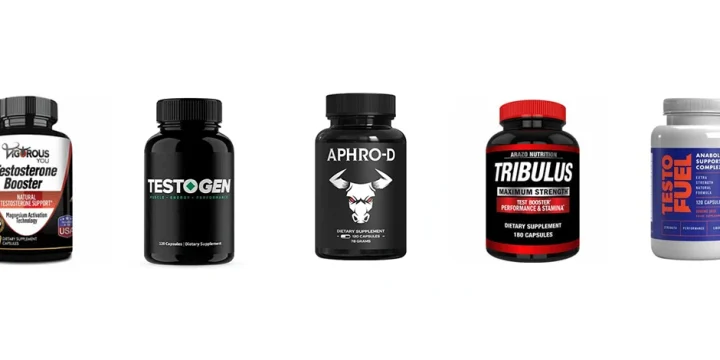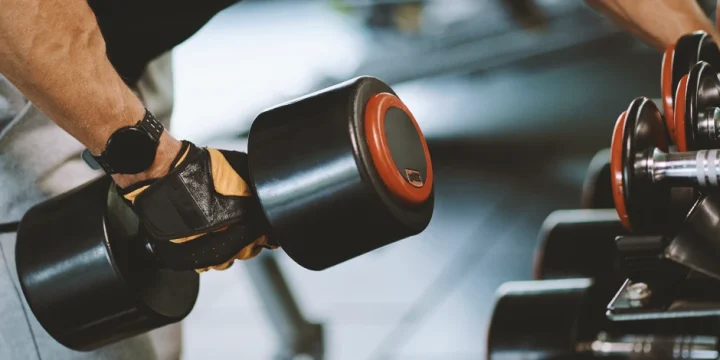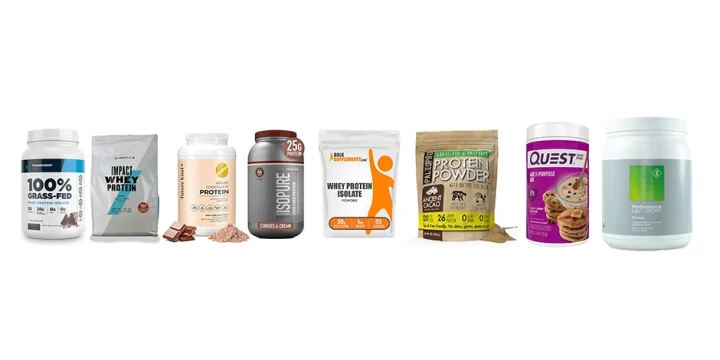As men age, their testosterone levels drop. It starts happening when men are 30 to 40 years old.
The drop in testosterone levels leads to low sex drive, erectile malfunction, depression, reduced muscle mass, and lower energy levels.
Many testosterone treatments are available, but with so many options out there, knowing what’s best for you can be difficult.
I’ve consulted a medical professional and performed hours of research on different testosterone treatments to help you decide what’s the best one for you. Let’s start.
Quick Summary
- Some of the best low testosterone treatment options are skin patches, pellets, oral therapy, and testosterone supplements.
- Signs that you may have low testosterone include losing body hair, erectile malfunction, low energy, and depression.
- According to research by the National Institutes of Health (NIH), total testosterone levels drop around 1.6% on average per year.
Is Testosterone Replacement Therapy Needed for Your Declining Testosterone Levels?
Testosterone levels reach their peak when men are in adolescence to early adulthood.
Once they turn 30 to 40 years old, T levels start to drop. According to research by the National Institutes of Health (NIH), total testosterone levels drop around 1.6% on average per year [1].
Drawing from my experience, getting a blood test was crucial in understanding that my declining testosterone levels were due to aging, not an underlying disease like hypogonadism.
Our team's insights from the Fountain TRT Review further emphasize the importance of professional consultation in such cases.
Low testosterone levels can lead to a decrease in male characteristics, such as muscle mass, facial hair growth, and libido, making testosterone replacement therapy a potential solution for restoring these attributes.
The most common signs and symptoms of low testosterone levels include:
- Decreased facial and body hair
- Decreased muscle mass
- Increased body fat
- Weight gain
- Decreased sexual desire
- Erectile dysfunction
- Low energy
- Depression
- Lower bone density
- Lower sperm production
Related Articles:
- What Causes Low Testosterone in 30 Year Olds?
- Can Low Testosterone Cause Depression and Anxiety
- Can Low Testosterone Cause Weak Immune System
What Is The Best Therapy?

For a long time, normal testosterone levels have been difficult to establish for clinicians.
This was done in 2017 when a press release from the Endocrine Society said a study conducted by The Journal of Clinical Endocrinology & Metabolism helped define the normal range of testosterone to be 264 to 916 nanograms per deciliter for men between 19 and 39 years old [2].
Problems with the testicles or the pituitary gland that controls them can cause low T even in younger men.
To go on testosterone replacement therapy, men need to have low levels of testosterone in their blood, as well as show several other unwanted symptoms related to low levels of T.
Some of the testosterone therapies a doctor can choose from include:
- Skin patch — applied once a day, usually in the evening on the upper body. It releases small amounts of testosterone into the skin, which helps fight hormonal imbalance.
- Gel — applied once a day on the skin of upper arms, shoulders, or thighs. After applying, you should wash your hands and cover the treated area so others aren’t exposed to testosterone.
- Pellets — these are implants placed under the skin. They are usually placed under hips or buttocks and are replaced every 3 to 6 months.
- Injections — these are usually applied for 7 to 14 days. Injections affect testosterone levels most quickly. Usually, after an injection, testosterone production is high for a few days, and then it slowly decreases until there’s a testosterone deficiency again, and the T levels stabilize. It can be challenging for the patient, as there are likely to be mood and energy level swings.
- Oral therapy — Pills that are swallowed or tablets attached to the gum or inner cheek twice a day. These slowly release testosterone into the bloodstream.
- Testosterone supplements — herbal supplements that contain vitamins and minerals and claim to increase testosterone levels. There isn’t enough research done to support these claims.
- Testosterone food — some food can help increase testosterone levels, especially if it is rich in zinc and vitamin D. Also garlic can raise low T [3].
You should visit a primary care doctor, who will perform blood tests, such as total level of testosterone, luteinizing hormone, follicle-stimulating hormone, to determine your natural hormone levels and decide if you need testosterone replacement therapy.
“There are screening tests that we like to do to, to monitor and to make sure that you do have a truly low testosterone level. And there are some other lab tests that we’d like to check that we will monitor when you're on therapy. So, having the discussion with your MD, understanding the risks and benefits will really lead to a better outcome.”
- Aram Loeb, MD, University Hospitals Urologist
Doing blood tests to determine your levels of testosterone is especially important if you have prior health conditions, genetic diseases, or hormonal imbalances. Testosterone replacement therapy is often considered an effective treatment option for individuals with low levels of testosterone, helping to restore hormonal balance and alleviate associated symptoms.
Natural Remedies
Testosterone replacement therapy is often considered an effective treatment option for individuals with low testosterone levels, helping to restore hormonal balance and alleviate associated symptoms.
However, some people strive to avoid therapies, and they are on the lookout for natural remedies.
Based on my first-hand experience, incorporating resistance exercises and managing stress significantly boosted my natural testosterone levels, offering a healthy alternative to medical therapies.
Here is what can help you achieve this goal:
- Do resistance exercise and lift weights
- Try to manage your stress levels
- Get enough vitamin D
- Get 8 hours of uninterrupted sleep
- Don’t drink too much alcohol
- Change your diet
- Use supplements
Side Effects of Therapies
As indicated by my tests, while undergoing testosterone therapy, I experienced some mild acne and sleep disturbances, which were manageable but important to consider for anyone contemplating this treatment.
While testosterone therapy is believed to be the best treatment for low T, it has several side effects, such as:
- Acne
- Heart disease
- Sleep apnea
- Increased risk of prostate cancer
- Blood clots
- Increased red blood cells count
- Fluid retention
- Redness and itchiness at the place where testosterone replacement therapy is administered
- Allergic reactions to long-acting injection
- Topical testosterones (gels and creams) can transfer to others
- Enlarged breasts in men
References:
- https://www.ncbi.nlm.nih.gov/pmc/articles/PMC2544367/
- https://academic.oup.com/jcem/article/102/4/1161/2884621
- https://pubmed.ncbi.nlm.nih.gov/11481410/
About The Author
You May Also Like






